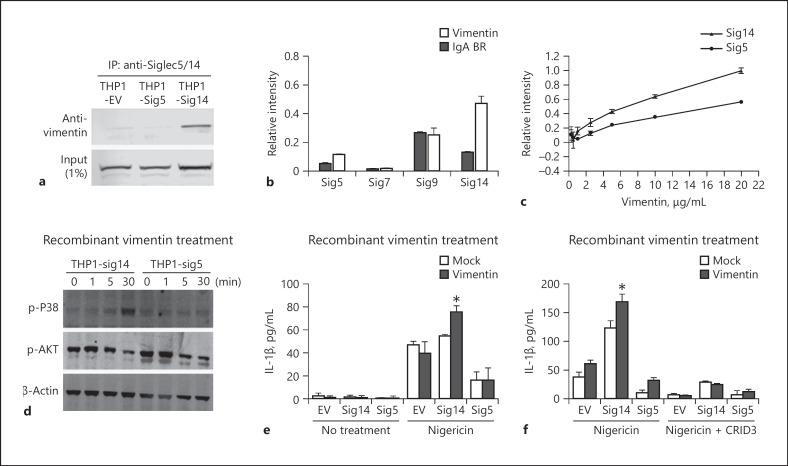Fig. 3.
Vimentin can engage Siglec-14 to increase inflammasome activation. a Cell lysates of THP1-EV, THP1-Sig14 and THP1-Sig5 cells were immunoprecipitated with anti-Siglec-5/14 antibody and the interaction of vimentin assessed by western blotting. b Direct binding of Siglec5-Fc (Sig5), Siglec7-Fc (Sig7), Siglec9-Fc (Sig9) and Siglec14-Fc (Sig14) to recombinant vimentin as measured by ELISA; GBS β-protein immunoglobulin A binding region (IgA BR) was used as a negative control. c Direct binding of Siglec-14 and −5 to the various concentrations of recombinant vimentin measured by ELISA. d Cells were treated with 10 μg/mL of recombinant vimentin for the indicated time points, then phosphorylation of p38 mitogen-activated protein kinase P38 (p-P38) and AKT (p-AKT) protein levels were assessed by western blotting. e Cells were treated +/– recombinant vimentin for 2 h, then exposed to nigericin or buffer control for 30 min. Released IL-1β was assessed by ELISA. f Cells were treated with or without recombinant vimentin +/– NLRP3 inhibitor CRID3 sodium salt (CRID3) for 1 h, then exposed to nigericin or buffer control for an additional 2 h. IL-1β release was assessed by ELISA. Error bars represent the SD of data means from 3 independent experiments. * p < 0.05. IL-1β, interleukin-1β; EV, empty vector.

